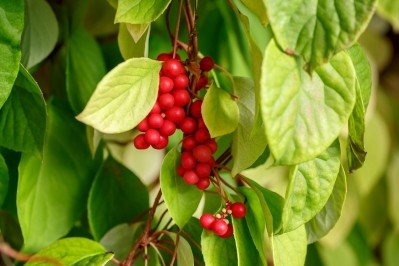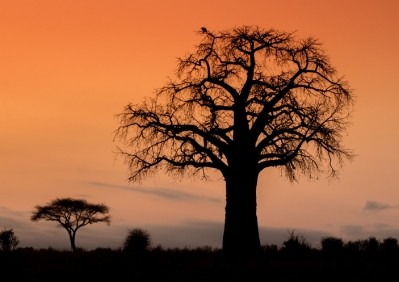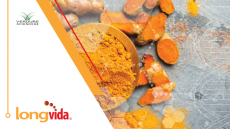Ethnobotanical survey points to fragility of traditional medicine knowledge

The new survey was published in the Journal of Ethnobiology and Ethnomedicine. It was the work of researchers associated with a university and a government institute.
First survey of kind done in district
The survey relates to the Mizo tribes in the Champhai district of a part of India known as Mizoram, that was at first a subset of the Indian State of Assam. The area, which is upland region covered by rainforest, is wedged between Bangladesh on the west and Myanmar on the east.
Mizo is a name applied to several ethnic groups unified by a single language. After a period of unrest in the 1960s, which included advocacy of independence from India, Mizoram was granted Union Territory status within India, effectively removing it from the control of the Assam State government.
The researchers visited 15 village areas within the district, which has a total population of about 126,000. The research team conducted at least 16 face to face interviews in each location. Altogether more than 200 interviews were conducted, and the researchers said the participants were chose at random.
Wide variety of plants used
The two most common plants in use come as no surprise: turmeric (Curcuma longa) and amla or Indian gooseberry (Phyllanthus emblica). The two are mainstays of the Ayurvedic medicinal tradition.
Altogether ethnobotanical researchers found that 93 different plants were being used in the traditional herbal medicine practices within the district. The plants belonged to 55 families and 85 genera.
The most common form of medicinal plants were herbs, followed by tree species, shrubs and vines or creepers. 53 were gathered in the wild.
Leaves were the most commonly used plant part, followed fruit, bark and seeds. This portion of the analysis was not weighted by volume, as the use of rhizome parts ranked low, but surely must account for a much larger part of the plant parts used by weight, as it is the rhizome of turmeric that is solely used. Decoction was the predominant method of preparing these herbs in this community, followed by
The researchers said this was the first time the enthnobotanical knowledge within this particular region has been catalogued, though many such surveys have been conducted in other parts of India. And it may have come not a moment too soon, they said.
“This study also revealed that younger generations between the ages of 18 and 30 have little to no knowledge of preparation of herbal medicines and their use as compared to the older age groups. This is mostly due to the availability of modern clinical drugs in the villages. Therefore, the traditional knowledge and practices of medicinal plants in the study area are somehow at risk of dying. This is why it is important to document the valuable knowledge as well as for conservation of the taxa,” they wrote.
Breaking the chain of traditional medicine
Experts with experience with the preservation of ethnobotanical knowledge contacted by NutraIngredients-USA said it’s a growing issue worldwide.
“In areas where there is inadequate trade or infrastructure, retention of traditional knowledge of plants fades as people seek economic opportunity by other means. Keeping this knowledge requires support and advocacy, on the part of government and private companies,” said botanical ingredient consultant Chris Kilham who is in India at the moment working on a project having to do with ashwagandha, another mainstay of Ayurveda.
“When there is no advocacy, things die out. This happens all over the world. The idea is to assist indigenous people to develop trade if they wish to do so, and to help them to gain market access. With this, trade can flourish and knowledge will be maintained. Without that then the knowledge is lost,” he added.
Roy Upton, RH, DipAyu, concurred, saying that while plant species may become rare or die out, plant knowledge can, too, which can amount to much the same thing. Upton is the founder and executive director of the American Herbal Pharmacopoeia.
“I consider it critical to preserve and cultivate traditional knowledge of medicinal plants worldwide. The majority of medicines were originally derived from plants and so the therapeutic potential to humanity is great,” Upton said.
“This is in addition to the inherent value of preserving individual cultures that are otherwise marginalized or not fully represented in the world community. For example, Ayurveda, Unani, and Jidda traditions are more fully represented but minority communities such as this are not. Communities such as this are especially important as each elder who passes takes that knowledge with them. As the authors state, this is the first ethnobotanical survey of this community so that suggests a tremendous amount of traditional knowledge has already been lost, at least for now,” he added.
“Traditional knowledge is being lost worldwide, no more so than in North America where most native medicinal plants have been seriously studied. We have developed monographs for yerba santa (not yet published) and devils club (published) for which there was some preliminary work but no clinical, though they were extremely important Native medicinal plants,” Upton said.
Finding the funding
Upton said one of the challenges is finding funding mechanisms for doing this work. Many common pharmaceuticals had botanical origins, but drug development as it is practiced in the West focuses on unique molecules and the market dynamics that pertain to them. Maintaining traditional knowledge isn’t part of the deal. In India, the situation is a bit more promising, with an official government agency, AYUSH, helping to raise awareness of these traditional medicine systems. (AHP is woking with AYUSH at the moment to develop a series of botanical monographs.)
“The authors note the people in this community have a deep knowledge of plant medicine but it is relative to what they need and does not necessarily translate to a global need. Additionally, there is no comparison of their traditional, for example, gastrointestinal remedy, to TUMS, peppermint oil, or other remedies; so you see the challenge in placing a value on this type of knowledge; from a global perspective,” Upton said.
Source: Journal of Ethnobiology and Ethnomedicine
https://pubmed.ncbi.nlm.nih.gov/35331291/
Ethnomedicinal study of medicinal plants used by Mizo tribes in Champhai district of Mizoram, India
Authors: Laldingliani TBC, et al.















